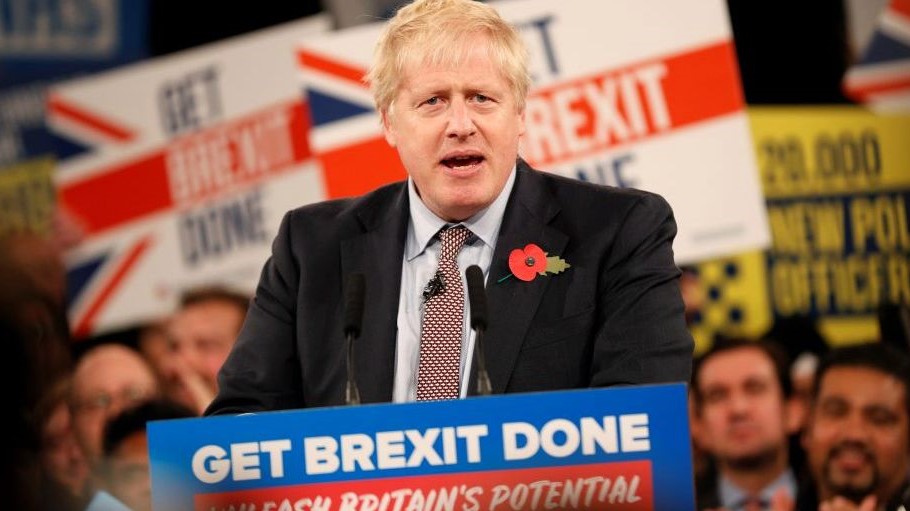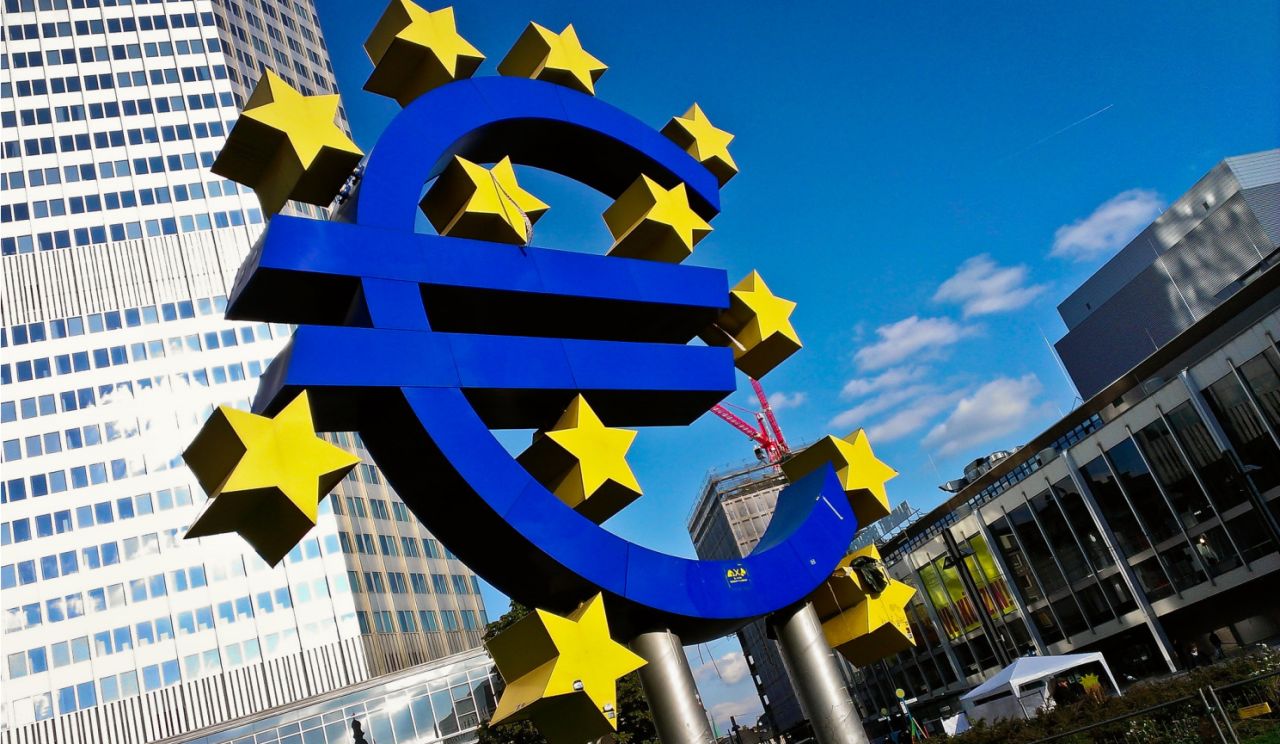For nearly 50 years UK trade policy has been driven by the EU
Since 1973, the UK’s pattern of trade has been dramatically influenced by three phenomena:
- It’s membership of the EU, with the development of its internal market and its relatively protectionist stance towards trade outside the EU
- The rise of Asia generally, and China in particular, as the manufacturing centre of the world economy, and
- The decline of North Sea oil production that has turned the UK from a net energy exporter to a net importer.
This fact alone means that in trade negotiations the importance of agricultural protection for “domestic” producers differs dramatically between say, France and the UK. The UK’s interest lies in being able to purchase food from abroad at the best possible price, irrespective of whether it comes from the EU or not. In contrast, many EU countries see their national interest in protecting domestic producers from more efficient and lower cost global producers at the expense of European consumers.
The importance of manufacturing exports to the German economy is much greater than it is to the UK. Conversely, the UK’s largest exports are in the service sector, which made it unique among the major members of the EU. Where the UK’s national interest diverges from the collective interest of the EU, the UK’s departure from the EU should provide the opportunity for a more bespoke and therefore potentially more favorable trade regime.
Quite apart from the differing trade priorities, membership of the EU has impacted the pattern of UK trade further through the indirect impact of the development of the Eurozone. The consequence of an economically diverse group of European countries sharing a common currency has been a growing misalignment of exchange rates between some of the UK’s largest or potentially largest trading partners.
The second major global trend shaping the UK’s trade environment has been the economic rise of Asia generally and China in particular. In 1999, prior to China’s accession to the WTO, China accounted for just 0.8% of UK exports and 1.6% of UK imports. The rapid rise of a mercantilist China as a global trading power means that the PRC now accounts for about 7% of UK imports and 3.5% of UK exports. Asia in total accounts for about 20% of UK trade.
While the UK’s future economic relationship with China is intrinsically bound up with security and geopolitical issues, the rest of Asia still proffers a tremendous trading opportunity, particularly if the newly industrialized and emerging Asian countries begin to diversify away from China and abandon their neo-mercantilist approach to trade. In contrast to the 9% share in global import growth of the Eurozone in the decade through to 2018, East Asia and the Pacific has accounted for 50% of the total growth, split roughly 50:50 between China and the rest. In addition, South Asia and the Arab world has accounted for about another 11%.
The UK has moved from being a net exporter to a net importer of energy
Finally, the UK’s trade pattern has been heavily impacted by the deterioration in North Sea oil production which has turned the UK from a net exporter of oil and petroleum products to a net importer. Having spent most of the period from 1980 onwards as a net exporter of energy, the UK turned a net importer in 2004. Since then, energy dependence has risen and imports now account for about one-third of primary energy supply.
This resulted in an energy trade deficit of GBP18 bn in 2017 or about 0.7% of GDP being almost entirely composed of imports of oil and gas. The UK is a relatively efficient user of energy (2.8 tons of Oil Equivalent per capita versus the US at 6.8 tons, for example) and therefore security of supply will have to come from diversification of source, geopolitical considerations and in the medium term an increasing proportion of domestically sourced renewable energy. In the UK there is a confluence of interest between the green agenda, national security concerns, trade and industrial policy when it comes to energy policy.
The UK has run persistent trade deficits in recent decades
If the above factors have been the major drivers of trade patterns in the UK, what has the result been? The UK has been a perennial current account deficit country running a deficit in every year since 1985 despite being an energy net exporter through till 2004. The trade balance in goods and services has been positive in just 18 out of the last 62 years and most of those years were pre-1985. The UK recorded a very modest trade surplus in the three-year period 1995-1997.
Very substantial goods deficits have been somewhat offset by large services surpluses
Underlying the consistent deficits, however, has been a bifurcation of performance between trade in goods on the one hand, and trade in services on the other. Since the early 1980s the UK’s trade in goods has been consistently in deficit while the services sector has been producing consistent and growing surpluses – albeit not large enough to pay for the goods deficit. These imbalances are among the largest in the world. For example, the UK’s deficit in goods trade in 2017 and 2019 averaged in excess of 6.5% of GDP, while the surpluses in services were over 5% of GDP.
Although goods exports as a percentage of GDP are well off their high of 20% reached in 1977, they still stand at 16% of GDP, roughly in line with their long run average. The decline in the UK trade position in goods has therefore more to do with the increased imports of goods as a percentage of GDP, than a decline in goods exports. Service exports as a percentage of GDP have risen from about 5% in the late 1980s to 14% of GDP in 2018 making them almost the same size as goods exports.
There has been a stark difference between the balance of trade with the EU and the balance with the rest of the World
If there is a stark contrast between the trade performance of the UK in goods versus services, there is an equally stark contrast between the balance of UK trade with the European Union and with the rest of the world. UK trade with the rest of the world has oscillated between surplus and deficit regularly in a cyclical fashion with the current position being a sizable but not outrageous surplus. In contrast, the UK has run consistent, very sizable and growing deficits with the EU. These have grown dramatically since the turn of the century.
The single currency has prevented the natural adjustments from taking place
On the eve of the introduction of the single currency in 1999, the UK’s deficit with the EU was just a modest GBP13 bn. It grew steadily but controllably through to GBP22 bn in 2011 when the Eurozone crisis broke and has tripled in size since then. The key driver has been growing currency mis-alignment – the deficit with Germany has grown much faster than say that with Italy – and a complete lack of growth in the Euro Area.
Poor growth in the Euro Area has limited the scope for export growth
In 2008, Euro Area GDP was USD14.1 trillion; the Euro Area ran a current account deficit of USD250 bn meaning final domestic demand was about USD 14.3 trillion. A decade later and final domestic demand in the Euro Area has fallen by 8% or more than USD1 trillion – with no growth in nominal GDP and a big swing in net exports. UK final demand has been flat on this measure while world final demand, the UK’s opportunity set, has risen USD22 trillion.
An FTA with the United States would be a good starting point
If a legacy of EU membership is an over-reliance on an economically dormant Europe, the corollary of that is that trade with the United States has been modest relative to the size of the US economy. The US economy is 25% larger than the EU-27 and yet the UK’s trade with the US is less than half of its level with the EU. Of course, geographical distance plays a major role in explaining this, in addition to the policy framework, but the scope for a rebalancing of trade patterns, in a welfare increasing way, away from the EU and towards the US is clearly there. This might be especially true in agriculture. As an EU member, the UK trades with the United States on WTO terms and a free trade deal has the propensity to lower barriers to trade.
But the US is an open economy anyway and that will limit the scope for benefits
The UK government’s own estimates show that the trade enhancing nature of an FTA between the US and the UK would have only a modestly positive impact in growth in the UK, partly because the USA is already a very open economy and therefore the scope for improvement is more limited.
The real opportunity lies in developing countries
Over the coming decades the fastest growing areas of the global economy are, in reality, unlikely to be either the United States or the EU, but more likely what are now developing economies.
Asia ex-China has tremendous potential going forward
Asia has had economic momentum for the past 40 years and has been accounting for a growing share of the export opportunity set. In large part this as been driven by China in the past 20 years, once its base became large enough for the growth numbers to become meaningful. Going forward, China faces a huge demographic challenge with a working age population likely to shrink by up to 40% in the coming 30 years. This, together with its political system; the highly closed nature of its economy and the arbitrary nature of its treatment of foreign companies and imports make it a less attractive opportunity than its current size and an extrapolation of past growth might suggest.
CPTPP membership would be a helpful framework for the UK to promote greater trade linkages
If the real Asian opportunity lies outside China, the quickest and most efficient means for the UK to cement its current trading relationship with Asia ex-China would be for the UK to join the Comprehensive and Progressive Agreement for Trans-Pacific Partnership (CPTPP). It is not a given that this would be possible, but the idea does enjoy support from Japan and others.
Africa will see a huge increase in work age population in the coming 15 years, presenting the best global opportunity for growth
Relative to current expectations, Africa is probably the region that offers the greatest scope for growth in trade. While currently 17% of the world population lives in Africa, 26% of the world’s population under 20 years of age live there. Consequently, Africa’s working age population is expected to grow by 450 million or 70% by 2035. The richest African countries are already recording GDP per capita close to or in excess of the poorest EU countries (Bulgaria <USD10K vs Equatorial Guinea > USD10K). As Africa’s spending power rises so too will the opportunity for both services and manufacturing exports from the UK. In return, the UK’s need for agricultural imports and energy imports provide a market opportunity, as does the UK’s open market for manufactured goods.
A bespoke trade policy in the national interest has the potential for upside surprise and a more balanced outcome
Any country’s national interest is best served by engendering as much competition as possible for the provision of those goods and services that it is either unable to produce itself or is inefficient in doing so. Equally, it is the national interest to maximize the market potential for those good and services that a country excels at producing. This has not happened in the UK for nearly 50 years. We should not be surprised if the results exceed the current expectations and the next decade sees strong UK trade growth, leading to a more balanced external account.
© The Hinrich Foundation. See our website Terms and conditions for our copyright and reprint policy. All statements of fact and the views, conclusions and recommendations expressed in this publication are the sole responsibility of the author(s).





